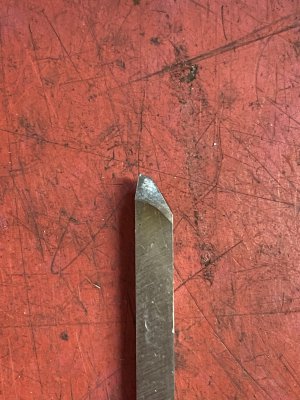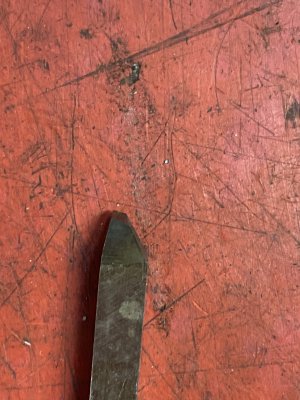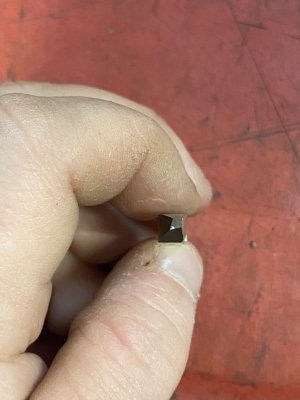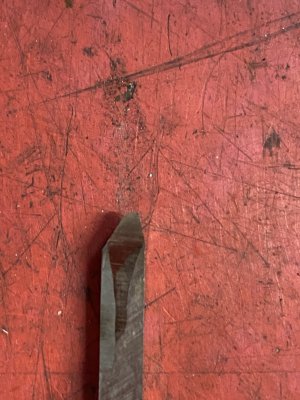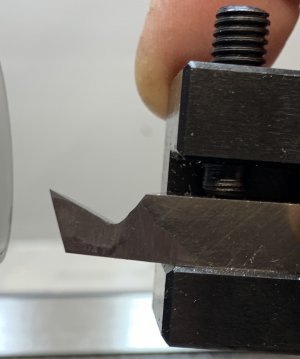I also do not have a grinder with a platen much less a sturdy one. My plan is to put the tool in a vice and take my dremel tool and take a grinding wheel and grind it in that way. I was also thinking of taking a very thin cut off wheel to get rid of most of the material and then use the grinding wheel to bring it in. The bits are also 3/16 so they are tiny. Bc of that i may actually go to like a 18 degree or maybe 20 do to the size of the bit.
-
Welcome back Guest! Did you know you can mentor other members here at H-M? If not, please check out our Relaunch of Hobby Machinist Mentoring Program!
You are using an out of date browser. It may not display this or other websites correctly.
You should upgrade or use an alternative browser.
You should upgrade or use an alternative browser.
Models for grinding HSS Lathe Tools
- Thread starter mikey
- Start date
I see. I expect that would work, particularly on a smaller bit like that. Particularly if you are planning on working with aluminum for now, don't worry about the angle too much. You can almost cut aluminum with an unground bit. 
Try to get a square tool grind with about 15 degrees on most sides, maybe more for the top rake. Then hone it nice and sharp. It will cut aluminum like butter.
Try to get a square tool grind with about 15 degrees on most sides, maybe more for the top rake. Then hone it nice and sharp. It will cut aluminum like butter.
Thanks @ttabbal i am also making a cutter for brass and steel. After they are done then i am going to make the same tools again but i would like to make them for roughing. For a boring bar would you follow the same principle as the typical turning tool for all of the angles? This is the little guy i am making them for.
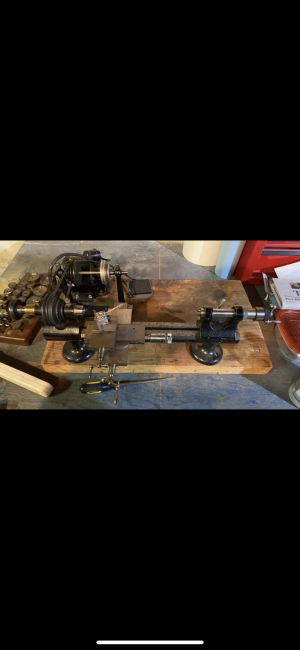

- Joined
- Dec 20, 2012
- Messages
- 9,422
I also do not have a grinder with a platen much less a sturdy one. My plan is to put the tool in a vice and take my dremel tool and take a grinding wheel and grind it in that way. I was also thinking of taking a very thin cut off wheel to get rid of most of the material and then use the grinding wheel to bring it in. The bits are also 3/16 so they are tiny. Bc of that i may actually go to like a 18 degree or maybe 20 do to the size of the bit.
Brento, I highly recommend you buy a bench grinder or belt sander to grind lathe tools. They are the right tool for the job and will allow you to grind your tools safely and efficiently. Your tiny lathe will require tools that cut with very low cutting forces and you need control to create them. Can you do it with a Dremel? Possibly, maybe ... but I could grind exactly what you need in probably under a minute on a belt sander.
Please understand that I'm not trying to discourage you. Just trying to give you a heads up - there is a better way.
Thanks @ttabbal i am also making a cutter for brass and steel. After they are done then i am going to make the same tools again but i would like to make them for roughing. For a boring bar would you follow the same principle as the typical turning tool for all of the angles? This is the little guy i am making them for.
Neat little lathe. @mikey has a good point about wanting low cutting forces on a little machine like that. Before you go too nuts grinding lots of different tools, try a 15 degree square tool. It will cut most materials well and even do a good job roughing while still shaving tenths. For brass, I think you want a low back rake angle. I'd have to check again as I don't work with brass.
I have never used an HSS boring tool. I suspect my internal threading tool is probably the same idea, but with the cutting faces ground like a turning tool. For stuff that small I usually go for micro 100 solid carbide though.
The thing I think might be difficult with a Dremmel would be getting flat faces to hone. Getting the tools sharp will be harder. Maybe you're better with a Dremmel than I am.. My work with them tends to be on the rough side.
- Joined
- Sep 20, 2019
- Messages
- 1,347
- Joined
- Mar 31, 2015
- Messages
- 318

Models for grinding HSS Lathe Tools
I suspect that the guys who really want this info will read the whole thing, mine it for the stuff that matters to them and then create their own document.
 www.hobby-machinist.com
www.hobby-machinist.com
There is a PDF with a lot of info there. So you can see what the tool looks like and so we can all use the same language to describe things. The required into for a "15 degree square tool" is all there, just adapt things to your grinding style. The photo you show of the tool that came with the lathe has a positive rake. That is commonly used on brass, but I wouldn't suggest it for anything else. Have you been sent the model tools? @Z2V has been coordinating that. You can make some models of your own to reference as you go.
The tools that came with the lathe might work well. But they are likely to be confusing if you compare them to what we are doing here in the thread. Ignore them for now, we can go over them later and explain why someone might make them that way, but start with a "known good" setup that matches what we are doing. That way, we can help more effectively. Start simple, make one tool, use it, and go from there.


